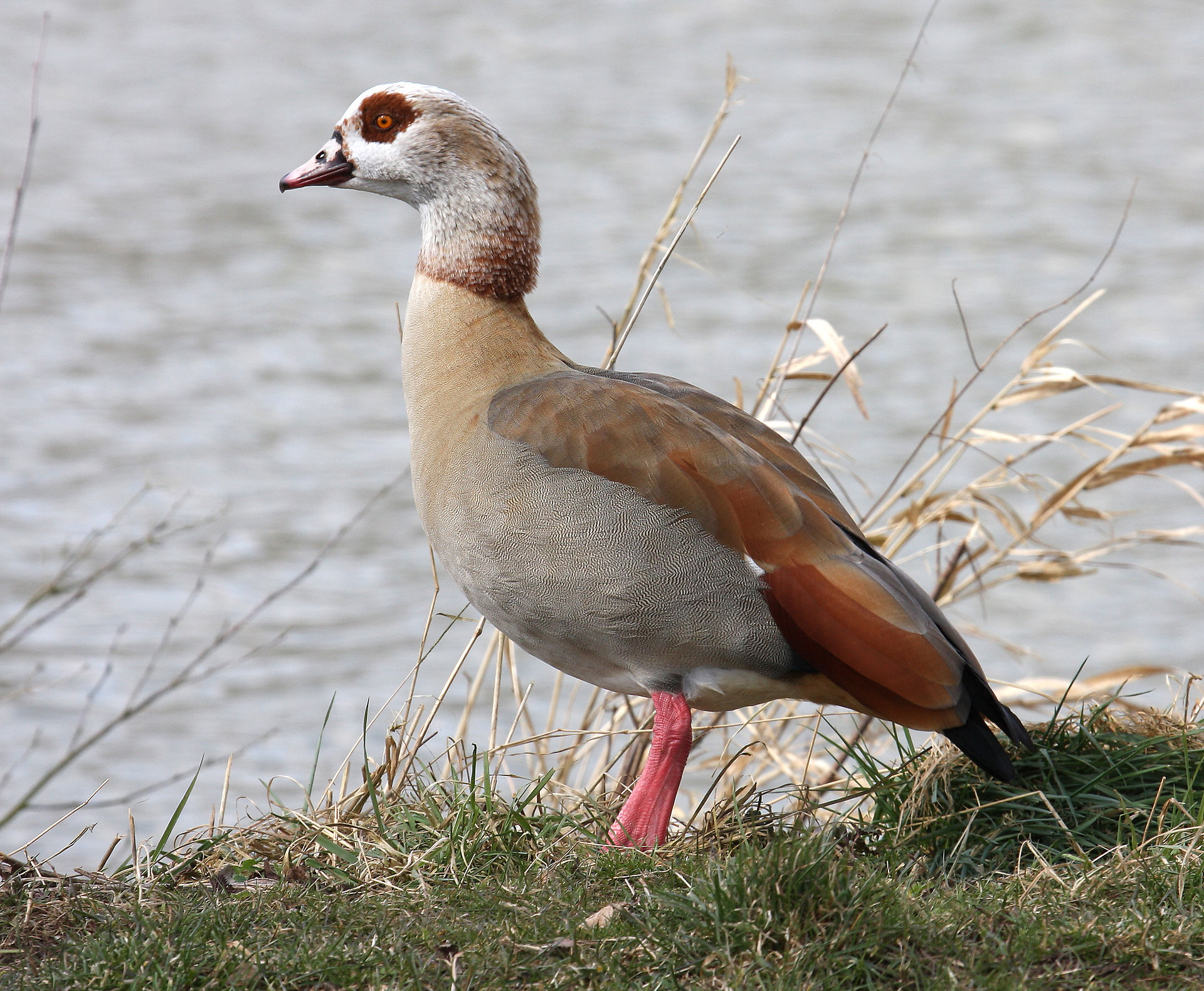Egyptian Geese
 The Egyptian goose originates from the region around the Nile River Valley, near Egypt.
They are also called the Nil Geese. They have been around since the ancient egyptians,
which considered the geese sacred birds. The were brought to Great Britain around
the 1700’s.
The Egyptian goose originates from the region around the Nile River Valley, near Egypt.
They are also called the Nil Geese. They have been around since the ancient egyptians,
which considered the geese sacred birds. The were brought to Great Britain around
the 1700’s.
Characteristics
Egyptian geese are small and active. They are not commonly bred nor exhibited. The Egyptian geese have colorful plumage with all different shades of brown and red and white. They are displayed in a distinct pattern. The Egyptian geese is a flight risk and does best free-range. The breed is widely distributed in Africa and may be found from Egypt to Cape Colony in a wild state. The breed does only fairly well in confinement, and the ganders are too vicious to be associated with other fowls.
Standard Weight
Gander: 10 lbs
Goose: 8 lbs
Varieties
Brown
Uses
These fowl are mean and have a temper and should be undertaken by advanced fanciers. They are ornamental fowl with their plumage. They lay in one sitting up to 12 eggs and they hatch in 30-35 days.
References
Ekarius, Carol. "Geese: Egyptian." Pocketful of Poultry: Chickens, Ducks, Geese, Turkeys. North Adams, MA: Storey Pub., 2007. 216-17. Print.
Johnson, Sibylle. "Egyptian Geese." Beauty Of Birds. Avianweb, n.d. Web. 13 July 2015.
Platt, Frank L. 1925. All Breeds of Poultry, Origin: History: Description, Mating and Characteristics. American Poultry Journal. Chicago.
Ives, Paul Pomeroy, 1877. Domestic Geese And Ducks. New York: Orange Judd publishing company, inc., 1951.
